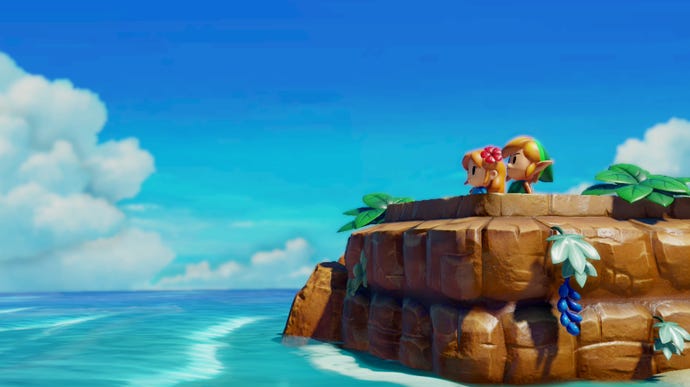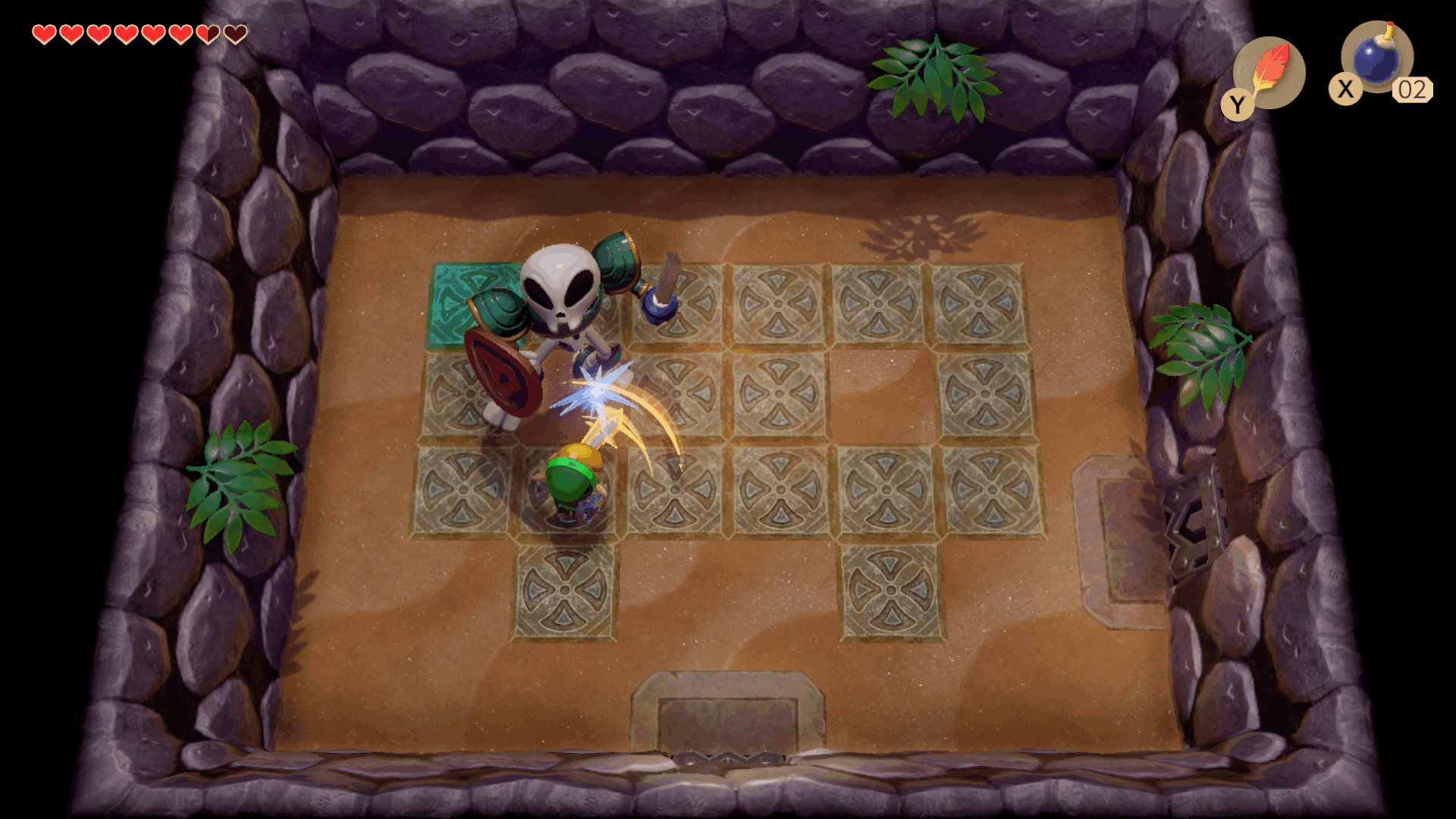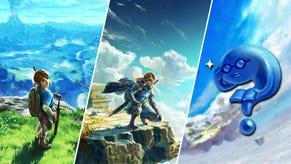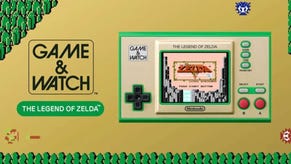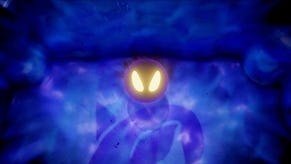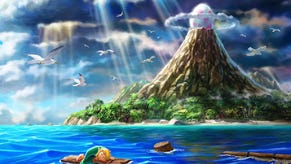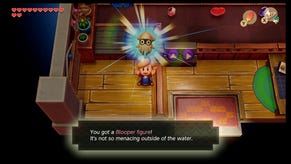The Legend of Zelda: Link's Awakening review - a worthy remake of an all-time great
The original The Legend of Zelda: Link's Awakening first released in 1993, placing it just a year after the utterly seminal A Link to the Past. In many ways the monochrome Game Boy title lived in its sibling's shadow, but through a colourized re-release, emulation and later digital download versions it gained somewhat of a cult status. To many, myself included, this little side story is considered one of the best-ever Zelda games.
There's an old adage that says you should never start a review with a history lesson, but one has to make an exception here: the past of the Zelda series is more or less integral to understanding this new version of Link's Awakening. In a sense history is repeating itself; where before it landed in the wake of the earth-shattering A Link to the Past, this now arrives with Breath of the Wild close in the rear-view mirror. One element of this is entirely different however, and it is absolutely key. In 1993, Link's Awakening was a fairly close match to its bigger brother, but in 2019 it is completely different from the new Zelda paradigm that was established in the open-ended Breath of the Wild.
The point of this history lesson is to say this: Link's Awakening for Switch is a perfect demonstration that the classic style of Zelda is still valid, fun and pretty much excellent, even in the face of Breath of the Wild's incredible upheaval. 2D and 3D Zelda have coexisted for a long time, of course, with a second, handheld-based top-down Zelda golden age actually ushered in by the Game Boy Colour version of this very title. The challenge this time has been about structure - Zelda's Skyrim-inspired open-world turn could easily spell the end for the traditional structure of dungeons with key items that also unlock further overworld exploration - but Link's Awakening firmly makes a case for that working just as well in 2019 as in 1993.
This is all important context to note because this is as faithful as remakes come. Though it is a new game built from the ground up this is no broad re-imagining of Link's Adventures on Koholint Island - it is a one-to-one remake. Practically every tile of the game is the same. Where things have changed, it's to promote a better, more modern feel: so the overworld has some larger areas now, where five or six individual 'screens' on Game Boy are now one seamless area. Dungeons keep the screen-based structure, mind, as it's key to their claustrophobic feel.
Or take another example in your control over Link's gear; on Game Boy, the two-button setup means you could only have two items equipped. That meant if you had your sword and bombs equipped, you'd have no shield. In the remake, key items that are frequently used are mapped to specific buttons - so there's dedicated buttons for your sword and shield as well as your dash ability, while there's no need to equip a specific item to lift heavy rocks once you have the item that allows you to. It's all streamlined nicely.
Some of the changes feel a touch gratuitous, if I'm honest. Some dungeons have locked doors that can be opened by tossing a pot at them. In the original game these doors were unwelcoming and obtuse, coloured in a steely grey. Players would have to experiment and work out how to open them. The same doors now have a picture of a pot on them, because... hint, hint - that's how they open, dummy.
For those old enough to remember the original versions, it's important to note that this is a sort of halfway-house version: it retains some of the changes from the 'DX' release like the optional colour dungeon, but also strips out some things like the photography side quest that basically existed to try to get you to buy a Game Boy Printer. There's also one major new addition that we'll cover in a moment.
This is all classic Zelda action, anyway. Link's Awakening has some wonderfully esoteric little puzzles in dungeons. It's a game that by the second dungeon requires you not just to look, but to read and think, parsing out a cryptic clue given several rooms away to successfully work out how to force another dungeon to give up its bounty. There are far harder Zelda games, but this is one that occasionally hits you with something that'll leave you thoughtful for a while before a strong, satisfying eureka moment hits.
Because it was a Game Boy game this is a compact Zelda world fitting of that platform, but that doesn't work against it. Small though Koholint may be, it's teeming with life, secrets and cute little nods in every area. It's a compact Zelda in every sense, which makes it perhaps the perfect game with which to launch the handheld-only Nintendo Switch Lite. This also means some hand-wringing is going on about the length of the game, so let's be clear: this isn't a huge, sprawling experience, and can safely be seen away in 15 to 20 hours even with a lot of bumbling about and getting lost. Fans with a strong memory of puzzles and where to go can probably see the entire experience off in a six hours or so; factor that into your decision on at what point to buy.
There's one major new offering to help pad out the experience - a Dungeon Creator. Now, don't get too excited - this isn't Super Mario Maker style stuff. It is perhaps a first tentative step towards getting a proper 'Zelda Maker' game, however. It works through the addition of Zelda staple Dampe the gravekeeper - except here he's a dungeon master of sorts. Dampe's house replaces that of the photographer on the map, and when you visit Dampe you'll regale him with tales of your dungeon exploring. Each dungeon you complete in single-player unlocks what are essentially dungeon tiles, aka chambers - individual rooms ripped from those dungeons. All-new tiles can also be found out in the world as rewards at mini-games and the like. You then slot together these tiles, a mix of those from the actual dungeons and some all new ones, to create a Zelda dungeon.
In real terms this means you can't get granular with things. You can't place enemies, chests or puzzles directly, but each room tile comes with set layouts of monsters and puzzle elements to deal with. You're basically deciding the order that rooms appear in, but there's some complexity in terms of how some rooms can overlapping elements, like switches that impact multiple rooms. It's a pretty basic mode and lacks an easy way to share your creations with friends. Also, to be honest, it's pretty naff. I can see younger players having a bit of fun with it, but players just don't have enough control over dungeons to make them truly fun and unique. As a small bonus within a larger experience it's fine. It's okay - but that's all. To be honest, the dungeon creator feels like a proof-of-concept that usually wouldn't have been released to the public. Hopefully it is being done as a litmus test as to if a Zelda Maker could work. It would, but it'd need to be a lot more in-depth than this.
The last thing to talk about is the visual overhaul the game has received. To keep it short: it's gorgeous. There's a very specific style here that I hope isn't reused if Nintendo go on to remake the other excellent Game Boy Zeldas, Oracle of Ages and Oracle of Seasons (which they should). The style here is a perfect fit for the setting and story of Link's Awakening, with an endearing quality that just draws you into the adventure. Performance is a little rough in spots, especially undocked, but the game performs a million times better than it did at E3, when it was quite messy. What's more, there's a relaxed, plodding pacing to this game that means that the slight hitches don't actually really interrupt its tempo or make you feel out of control.
With a gorgeous presentation and smart and minimalist tweaks, it's as charming and enjoyable now as it was in the nineties. Let down only by the lackluster dungeon creator and some uneven performance, the design of Link's Awakening nevertheless holds up brilliantly, which in turn makes the slavishly accurate recreation worthwhile. It's undeniable proof that the classic Zelda formula still works - and hopefully after Breath of the Wild 2 we can get yet another classic-style Zelda.
